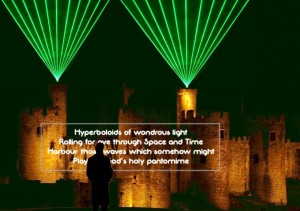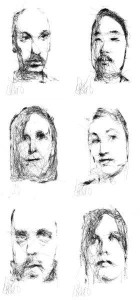
Alan Turing Year 2012 continues apace with a variety of events inspired by the great contribution made by the mathematician and code breaker to the history of computer science and modern biology. For this month’s BCS column, we’re featuring the work of artists/curators Craig Morrison and Joel Cockrill who have been commissioned by the Arts Council of Wales to produce a laser and light installation honouring Turing’s life and legacy. Appropriately entitled Thank You, Craig and Joel’s piece will be shown at theblinc digital arts festival in Conway, North Wales, and is a thanks on behalf of the media arts world, based on the very digital materials that Turing helped to invent. According toTuring’s biographer, Turing believed in the survival of the spirit after death. Perhaps he was right; here we are remembering him nearly sixty years after his death, his legacy surrounding us in the ever-present technology we use every day. Read the full article here: http://www.bcs.org/content/conWebDoc/48180
Also recommended is this lecture on Turing by Cambridge historian Professor Christopher Andrew, who argues that it is no surprise that Turing’s great legacy has been overlooked: no other country other than our own great country has the ability to hide its secrets as we do. The belief that for 30 years after WWII it was necessary to keep the fact that Turing invented the world’s first computer a secret, meant that two generations of students grew up thinking that the single most important invention of the 20th & 21st centuries the computer was American.

